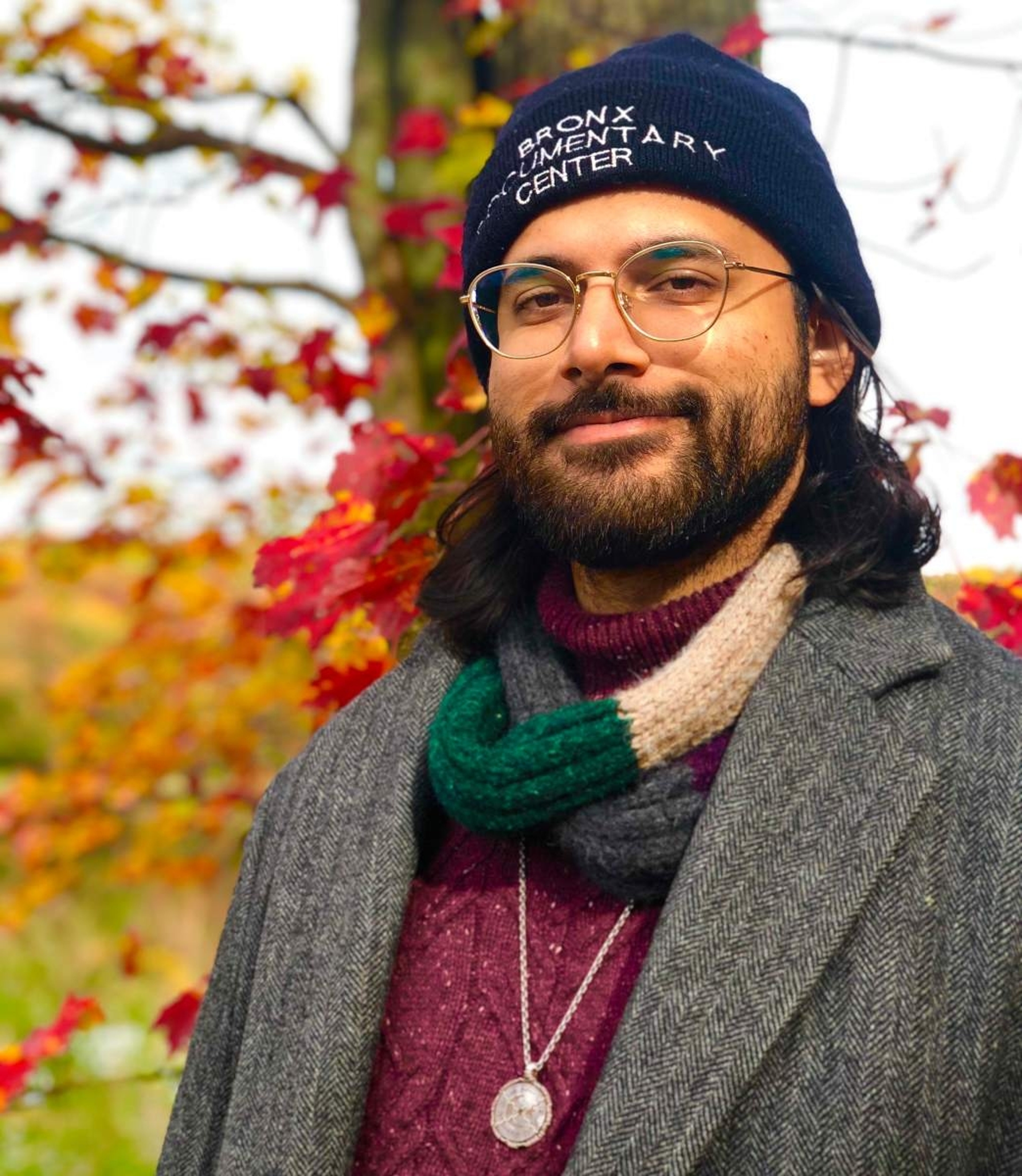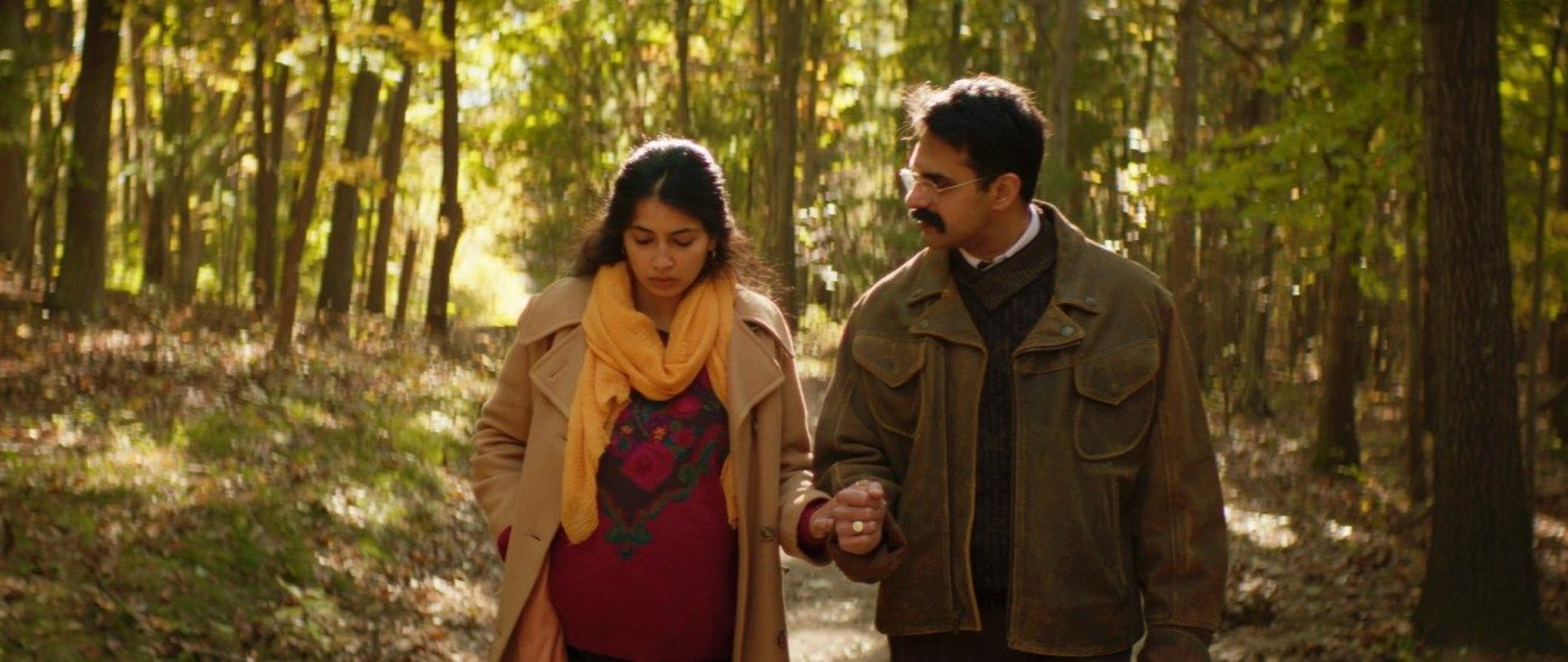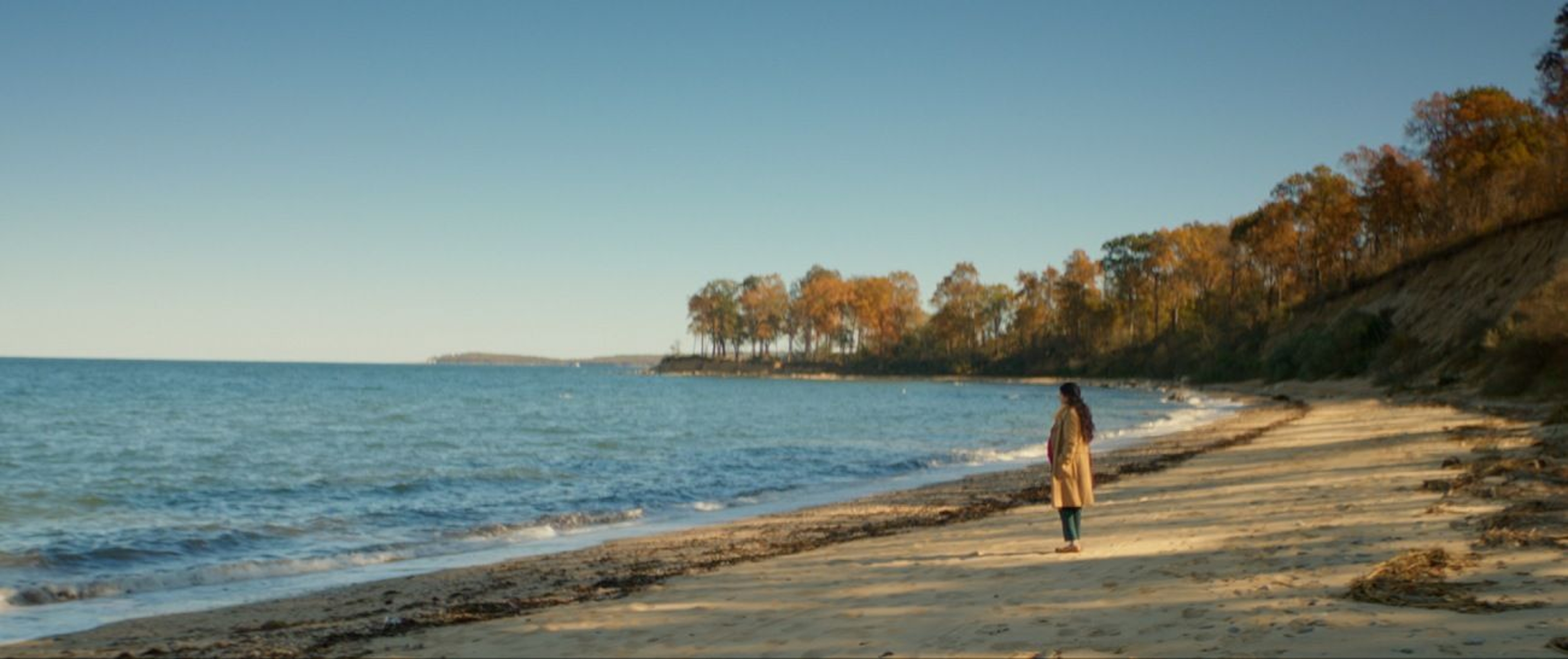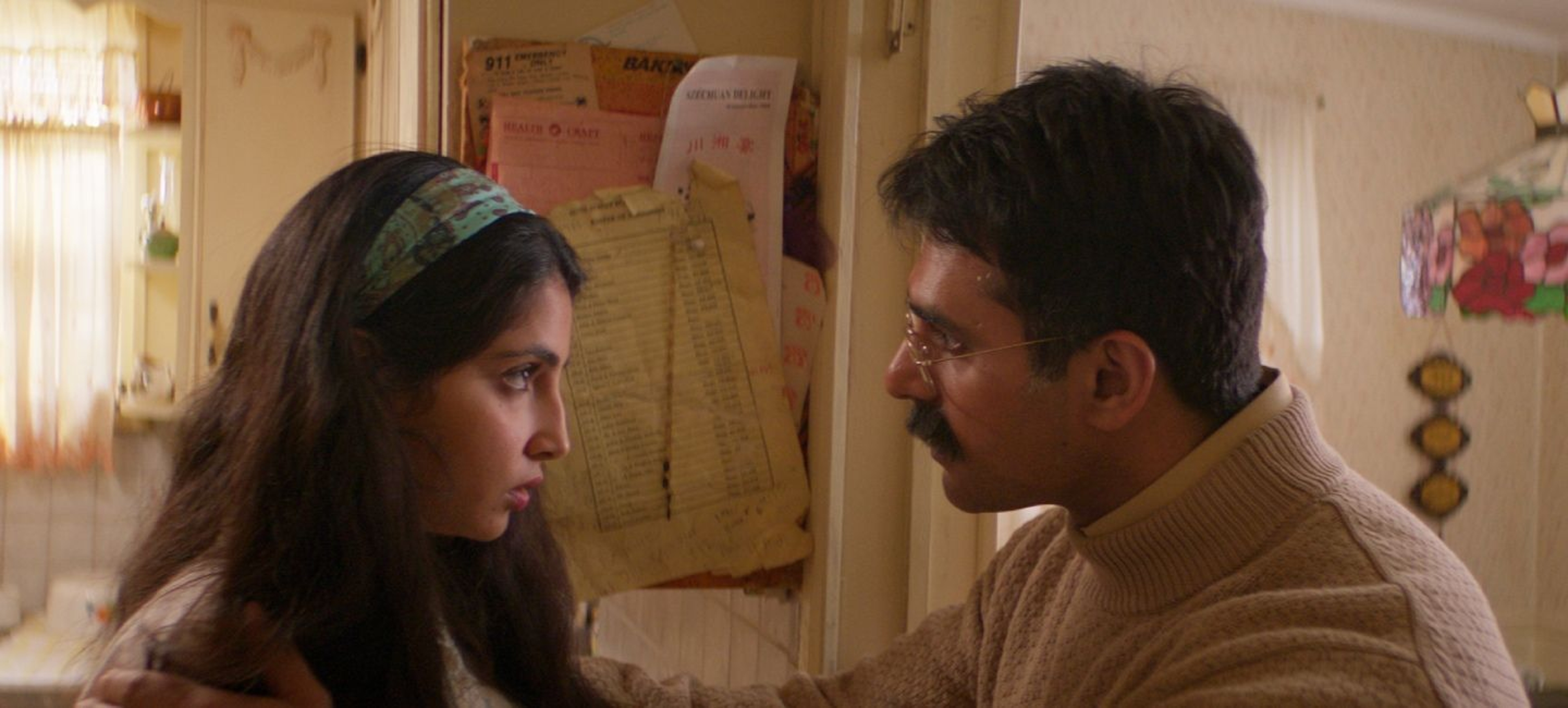Saleem Gondal’s short film Post Term is one of five works chosen by a special jury of filmmakers, curators, and critics for the Focus Features & JetBlue Student Short Film Showcase. Created as his MFA thesis film for the Feirstein Graduate School of Cinema, Brooklyn College, Post Term was selected from projects from 23 different graduate programs.
For Gondal, Post Term is an exploration into romance and tradition, highlighting the language of intimacy in South Asian culture. During a 1992 Long Island autumn, a Pakistani immigrant couple—Haaris (Shezi Sardar) and Rahimah (Sanjana Shukla)—confront their new life together.
We asked Gondal to tell us a little about the inspiration for his film, the artists who influenced him, and his plans for the future.
Follow him on Instagram: @saleemngondal
Saleem Gondal's Post Term
Where did the idea for Post Term come from?
Due to Covid-related issues, I had only five months to write, cast and shoot my thesis film. My professor at the time, Julia Solomonoff, suggested I spend three days thinking about what around me means something important. I was staying at my parents’ house at the time and found myself wondering: what are they like when I’m not around?
Growing up in post-9/11 Long Island, I’ve always felt a disconnect between my experience and my parents’. But as I’ve gotten older, I’ve started to sense that my parents are more like me than I thought. They have their own journey navigating community expectations, and their own paths to follow. As a non-native Urdu speaker, I was unable to access the conversations they had with each other. This film came out of a need to understand them by imagining their first year together in America as immigrants in an arranged marriage.
Although I was initially nervous about whether they would be willing to be the subject of an entire film, they thankfully said, “Yes.” They gave me detailed accounts of the early years of their marriage together. Through those interviews, I learned that my father was a poet and student activist against the right-wing tides in Pakistan during the late '70s, and that my mother wrote inquisitive social critiques in her student paper. I learned about the first conversations they had together and the unspoken gestures they performed to show how they cared for each other.
I wanted to make an “imagined memory” by telling their story through my eyes. In addition to their words, they agreed to share my father’s poetry from when he was in college. The goal became to explore the nuance within their stories and portray the passions and fears of a new couple in a strange country.
The dialogue is lovely. Can you describe your writing process?
The dialogue came about through deep meditation, immersion in my influences, and collaborating with others. When I started, I knew I wanted the film to have a naturalistic tone with the drama slowly bubbling up until the true fears of the couple are realized. I spent a lot of time outlining, looking at short films I admired, and breaking down what I thought were the beats of those films. But the story was very much in flux when I started writing the dialogue, and it took several more drafts to come together. My producer, Kellie Brook Malone, brought together a wonderful group of people to participate in a table read and give feedback, which was instrumental. It took weeks of exploring the characters and dialogue until I realized the terrible secret that Rahimah had been hiding the whole time, which solidified the arc of the film.
When it came time to write the Urdu dialogue, I was intent on making sure the lines flowed naturally in Urdu. I took Urdu lessons to improve my command of the language. I had a general sense of how the dialogue would flow. But I let the actors translate the lines at first, trusting not only their fluency but also their own process in owning their roles. My friend Omar Rahim connected us with Pakistani writer Bilal Sami to translate the script at the end of pre-production in order to give us the authentic words and phrasing before the shoot.

Writer-director Saleem Gondal
How did you find your principal cast?
I am indebted to the South Asian casting groups on Facebook. All of the actors reached out to us through Facebook, and I was fortunate that Nikhaar Kishnani and Shahjehan Khan saw those posts and agreed to play my aunt and uncle. Shezi gave a great reading of one of my other scripts through the South Asian filmmaker collective Kalakars, making this film an unexpected reunion between us. And Sanjana and I met through another South Asian collective SADAC, where we dreamed up ways to make collaborative and community-based spaces for South Asian artists. I knew her skills as a singer, but through this film I learned she is a fantastic actor as well.
We rehearsed over a period of two weeks. Most of the rehearsals didn’t include the script dialogue at all, and were instead about doing exercises to explore Haaris and Rahimah’s relationship before the film begins. We improvised a normal breakfast between them, getting ready for a party together, a walk through Prospect Park, and a day at work in the hospital. One of the best things we did was to reenact their wedding. Our production designer Rhea D’Souza, costume designer Heather Freedman, make-up designer Annalise D’Angelo, and cinematographers Arsalan Danish and Donna Del Castillo worked as the wedding crew. The photos of their wedding featured in the film came out of that exercise. All these moments were ways for the actors to build their own way into the characters, giving them a deep connection with the role that radiates off the screen.
What in the final film most captures what you saw in your mind when you first imagined the film?
In those initial days of frantically searching for an idea, I went for a walk with my family in Caumsett Park. I have a lot of memories walking through that park with my parents and felt that if I could recreate one of their first walks in autumn, I would have at least one scene I was proud of. Throughout the grueling writing process, the one constant image I had was to show the feeling of walking through the park in autumn. I owe much to the work of my DPs to imagine that walk over the course of many discussions, and the work of Steadicam operator Franz Braun and assistant camera Mo Morsy in making that one-take scene look seamless. Every time I watch Shezi and Sanjana in this scene, I’m floored by how much they look and sound like my parents.

Shezi Sardar and Sanjana Shukla in Post Term
What was the biggest lesson learned working on Post Term?
Editing is rewriting. We filmed a lot of scenes that were not in the final cut. We even planned a hospital scene that our location pulled the plug on the night before we were going to shoot due to insurance reasons. I worried for months that we were going to have to raise funds for a reshoot. But once I started the edit with my editor Adriana Céspdes, we saw that we had all the essential plot points we needed, and that we actually had to cut quite a bit. Most of our sessions together then became about restructuring the film, using stills from the film to get an emotional feel for which images would cut well together. Though it was terrifying to not know whether the film I wrote matched the film as we were editing, it was ultimately freeing to lean into the contributions of the editor, the cinematography, and the performances, which offered what the film needed in the end.
As an emerging filmmaker, who are your influences (filmmakers, artists, writers, or friends)?
Post Term owes much to the works of Jhumpa Lahiri and Mira Nair. I revisited Jhumpa’s Interpreter of Maladies to get a sense of short form storytelling, which was my guide in writing poignant and sharp stories in a South Asian context. Her essay “Teach Yourself Italian” helped me overcome my fears with Urdu and take an active role in speaking the language on my own terms.
Her book The Namesake and Mira Nair’s film adaptation of that novel paved the way for me to explore the unspoken romance with an arranged marriage. The performances from Irrfan Khan and Tabu in particular are stirring, showing us the affection between this couple through looks and body language. Mira Nair’s way of moving from humor to tear-jerkers had a profound impact on me ever since I first saw Monsoon Wedding. She never makes a film that doesn’t strike with layered visuals.
I’m also inspired by Richard Linklater and Barry Jenkins, two filmmakers who paved the way in exploring time onscreen. I revisit the Before trilogy and Moonlight before I make anything new.
Whenever I’m about to shoot, I also try to soak up as much visual art as I can to let the colors and frames of a single image seep into my subconscious. Shahzia Sikander, Toyin Ojih Odutoloa, Zoe Leonard, and Salman Toor were all big influences on me in the last year.
Lately, I’ve been diving into the history of Urdu in film, which includes Shyam Benegal’s work (Ankur is a stunning a directorial debut that doesn’t get talked about enough), Guru Dutt’s classics (Pyassa’s heavy heart was a direction for me in the Urdu poetry in the film) and the gonzo Amitabh Bachchan films of the ‘70s, many written by renowned Urdu writers Salim-Javed (the clash between brothers in Deewar is one of the tragic battles in cinema). Being able to appreciate this film history more as I improve my Urdu has expanded my vocabulary and worldview as a writer.
Lastly, the people who inspire me to get out of my funk are my friends. Without them, I’d be trapped in the loneliness of my self-doubt as an artist. Whether it’s an inspirational artist’s quote they share on Instagram, the time they generously give to each of my cuts and screenplay drafts, or the invitation to just be out in the world enjoying it. No matter how low I’m feeling, the connection I feel with my artist community is what gives me the jolt to keep going.

Sanjana Shukla in Post Term
What was the first film you saw that made you want to be a filmmaker and why?
Since I was young, I knew I wanted to be an artist of some sort. Each of my early attempts at actually producing a short seemed to end up in failure. I feared I didn’t have the talent to speak to actors or translate my vision on screen, so I opted instead to put my focus on writing, where I felt safe. It wasn’t until I saw the Before trilogy, directed by Richard Linklater (and co-written by stars Ethan Hawke and Julie Delpy), that I became excited by the idea of being a director again. Though dialogue-heavy, each of the films in the series are deliberately staged to visually and thematically communicate the uncertainty of whether romance can survive over time. I saw them over the summer of 2013, building up to the theatrical release of Before Midnight. When the credits rolled in the theater at the end of the third film, I was devastated and terrified to ever love again. But after a year of rewatching the series with my family and then the eventual love of my life, I saw that the films sparked a heated conversation about whether love can last. I have never been as excited about a film as I am when I’m talking to someone about this series. My drive as a filmmaker is to make films that ask the questions people are eager to explore, and hopefully get closer to someone else in the process.
Are you working on a feature film? What is it about?
For a few years now, I’ve been working on a feature film, Tortilla Roti, about the Punjabi Mexican community that formed in the American Southwest during the Great Depression. The first South Asian immigrants came to America when there were quotas against them gaining entry to this country and owning land. They had to leave their families back home while they scraped up enough money to survive. There was a community of Punjabis, where my parents are from, who married Mexican women, who themselves were scapegoated during the Depression as deportation raids targeted them all over the country. Though their unions were not accepted by everyone, the Punjabi Mexican community became very self-reliant in order to hold on to their homes. Their story resonates with the immigrants today who form their own support systems in a country that puts barriers and restrictions on their right to be here.
I’ve been fortunate to have met folks in the Punjabi Mexican community and hear the stories of how their families came to be. With this film, I hope to honor their history in its authentic Punjabi and Spanish, exploring the new language that formed between these strangers coming together.
